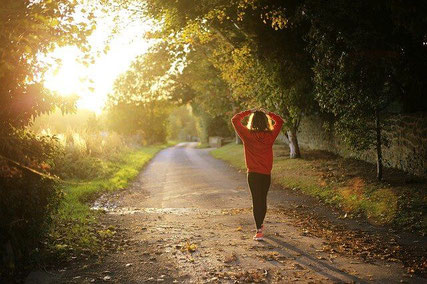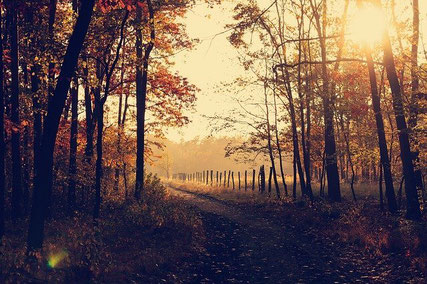
Walking is great for your mental health, but so-called ‘awe walks’ are even better.
That’s according to a new study which asked volunteers to add a weekly 15-minute walk to their normal schedules. The volunteers were then divided into two groups. One group were given no instructions other than to walk outside at least once a week for 15 minutes. The second group were asked to do likewise but they were also asked to ‘cultivate awe’ as they walked, to take in their surroundings and look at things afresh, as a child does.
Now, when you think of somewhere that inspires awe, you might think of somewhere like the Cliffs of Moher or the Grand Canyon. However, the researchers emphasised to the awe group that all kinds of everyday sights – the vastness of the sea, the sound of leaves crunching under your feet on an autumn day, dappled sunlight filtering through a leafy canopy – can inspire awe. The awe group was told that ‘with the right outlook, awe can be found almost anywhere, but it is most likely to occur in places that involve two key features: physical vastness and novelty’. As novelty helps to cultivate awe and a sense of wonder, the walkers were encouraged to go somewhere new each week.
At the end of the eight-week study, both groups reported some improvements in mood – not surprising, given we have long known about the psychological benefits of exercise, including walking. However, the awe group reported a greater sense of well-being and joy and were more likely to experience positive feelings like compassion and gratitude. They also become more skilled at discovering awe. One volunteer, for example, referred to focusing on the beautiful colours of autumn and the absence of such colours when in an evergreen forest. In contrast, a volunteer in the other group reported how she spent a recent walk getting worked up about an upcoming holiday and ‘all the things I had to do before we leave’.
SELFIES

Interestingly, the researchers found there was also a difference in the selfies taken by both groups (to document where they walked, all participants were asked to take a few photographs of themselves during each walk). The awe group made themselves smaller in their photos as the weeks progressed, preferring to highlight the landscape around them.
As study co-author Dr Virginia Sturm noted, ‘one of the key features of awe is that it promotes what we call “small self”, a healthy sense of proportion between your own self and the bigger picture of the world around you’. When we experience awe, we become aware of forces much larger than ourselves, of a vast and magnificent world. Our focus shifts from ourselves to the wider world. Consequently, we feel smaller and less significant but more connected to the world. Nature, music, a beautiful piece of art, being involved in a collective act like a concert or a political march – these and other experiences can inspire feelings of awe, the researchers note, driving feelings of gratitude, generosity and humility.
The study confirms a suggestion I never tire of making – the importance of novelty in our everyday lives. A new place, where the sights and sounds are unfamiliar, is much more likely to trigger feelings of awe. This need not be far away from you. You can find novelty in a country road you routinely bypass; you can find it watching the sunset or sunrise; you can find it on a clear and starry night as you trace the constellations in the sky.
So, if you’re looking for an awe-inspiring walk, seek out somewhere novel. The study also suggests you look for places characterised by physical vastness – for example, a hill with panoramic views, the shore of the sea, a hiking trail lined with tall trees.
Walking aside, cultivating awe in our everyday life is a valuable practice. It’s also a simple one that may involve merely taking a moment to look out the window or ‘pausing to consider the technological marvels that surround us’, says Dr Sturm. A little more joy and more connectedness with the world around us is, she adds, ‘something all of us could use these days.’
(First published in The Southern Star on 10/12/2020).